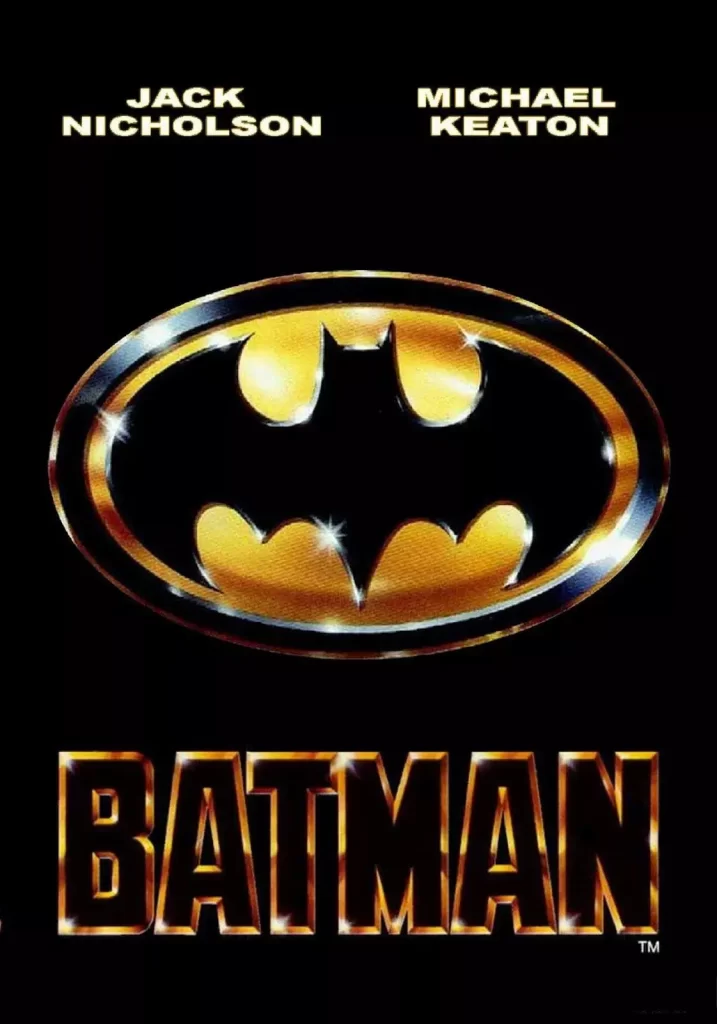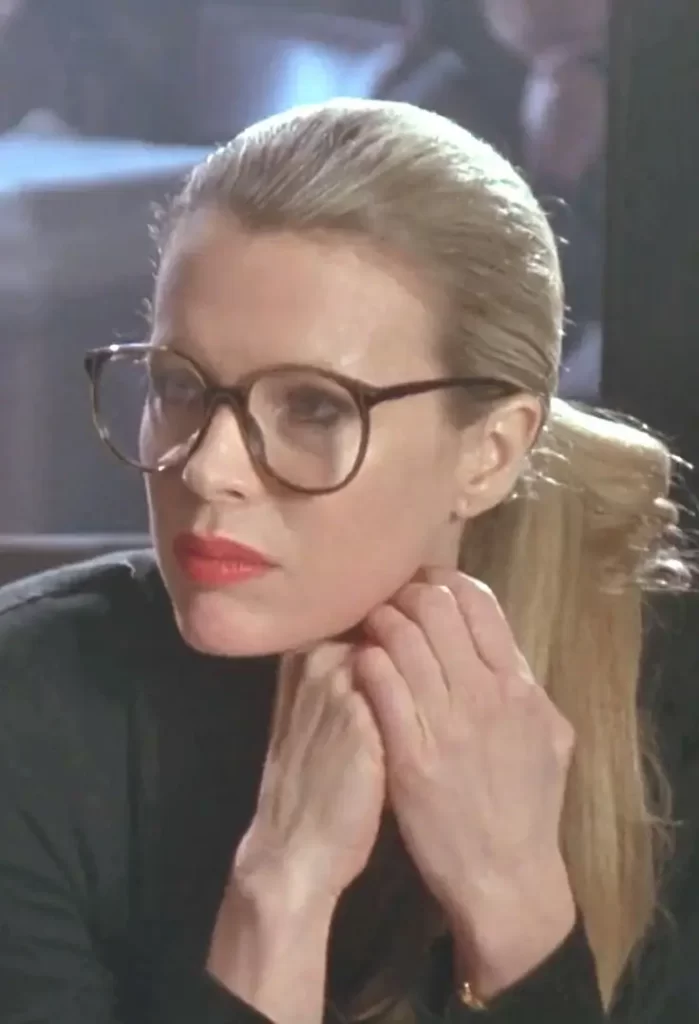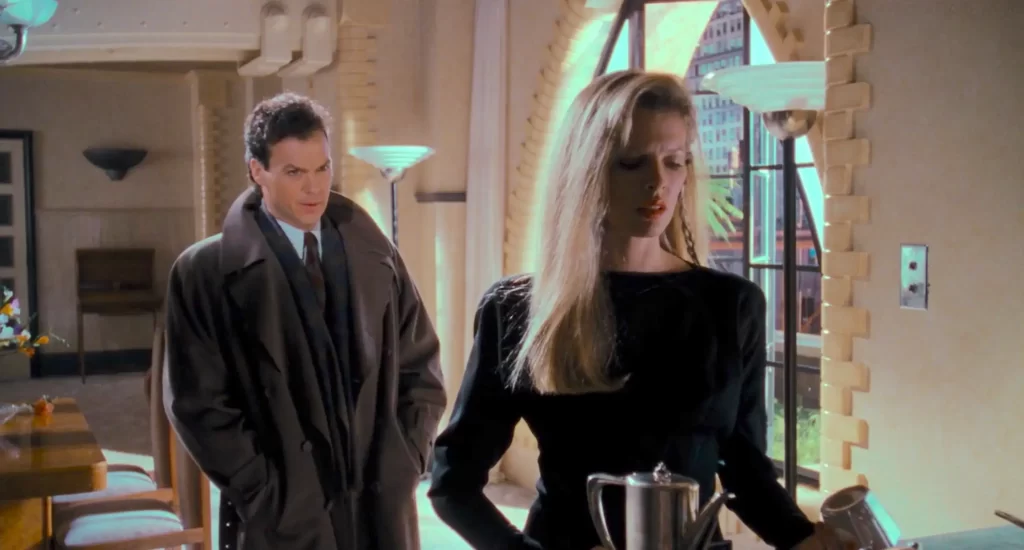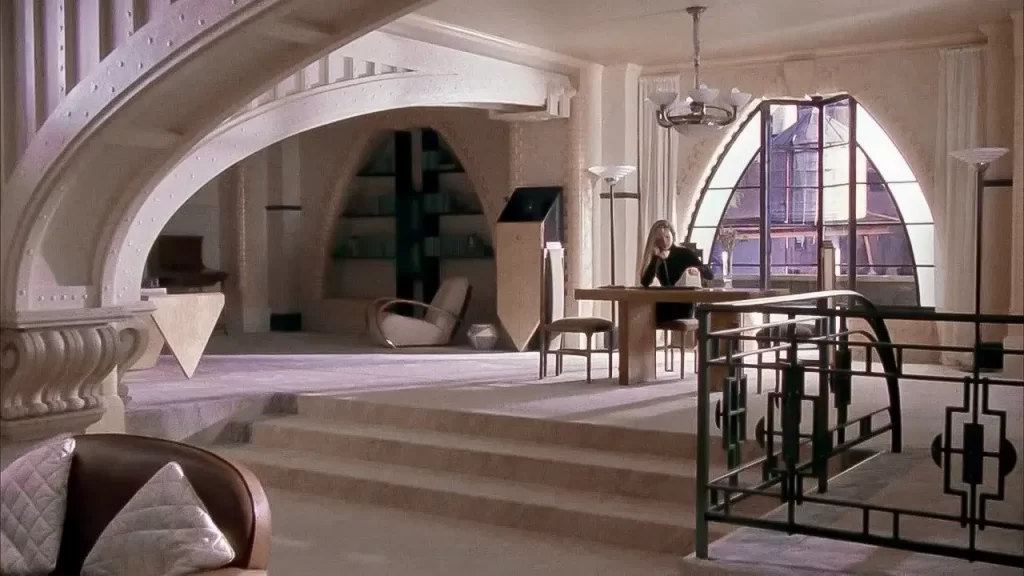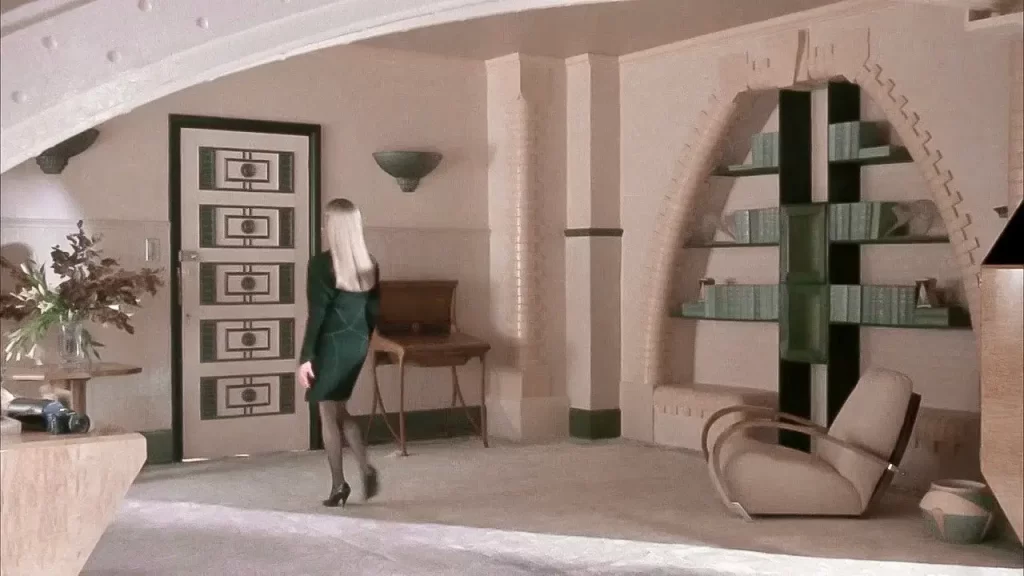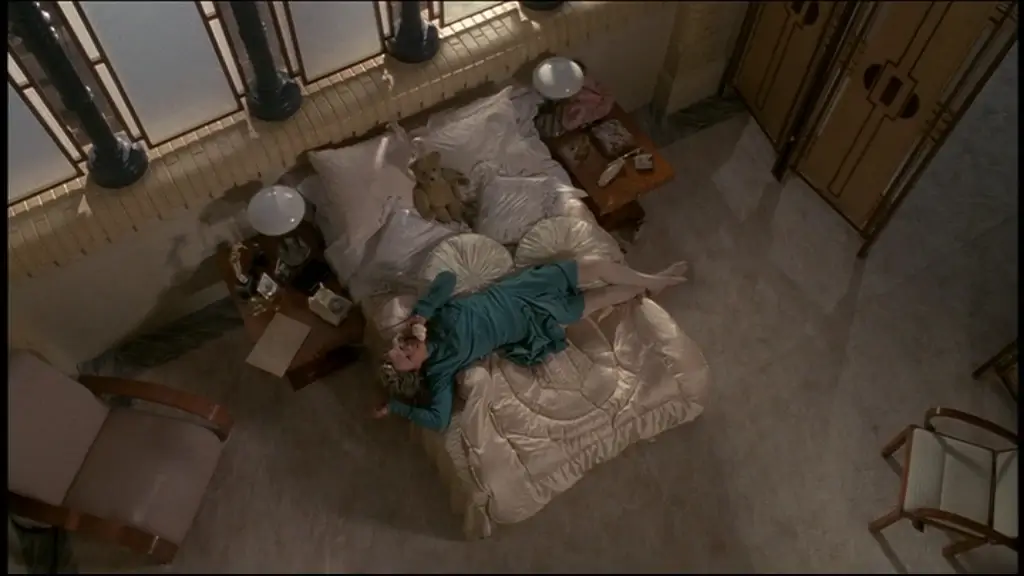Marvel mayhem may have ruled the movie house in the 2010s, but it was a DC Comics character who flew on film before others could run. June 23 marked the 35th anniversary of Tim Burton’s “Batman,” which saw the caped crusader of Gotham City take a turn from cheesy comic book character to serious crime fighter.
I was just a toddler when this film came out, and although my uncle took me to see it, I have no recollection. He says I was terrified of the Joker (which certainly tracks because I’ve really always hated clowns). In any case, I decided to watch the film this week to mark the anniversary and was struck by the set design. Particularly, I could not help but notice the fabulous apartment of Vicki Vale, the flick’s main chick.
Before proceeding, a disclaimer: Be advised that this blog post includes images of copyrighted material for the purposes of providing commentary and criticism on a small portion of a larger work. As such, this post constitutes a transformative work protected under fair use doctrine as stated in Title 17, Chapter 1, Section 107 of the United States Code as implemented by Congress beginning with the Copyright Act of 1976.
Now, let’s check out the sweet pad.
The Cream Always Rises
Vicki Vale is a character in the DC Comics universe first introduced in 1948. In the comics, she most often appears in Batman storylines working as a journalist in Gotham City. For the 1989 film, Vale is portrayed by actress Kim Basinger as an ambitious fashion photographer trying to transition to more serious photojournalism work.
She initially shot for Vogue, but her photographs of the aftermath of the Corto Maltese Revolution appeared in Time Magazine.

Photojournalism in Gotham City must pay extremely well, because Vicki’s got some pretty nice digs! So remarkable, in fact, that both Bruce Wayne and the Joker feel compelled to comment on how nice and spacious the apartment is with more than a little surprise.
The penthouse loft is a vision in cream. Yet even with such a neutral color palette, the apartment is most certainly not bland. The tone is soft and warm, in contrast to the gritty darkness of the decaying city outside.
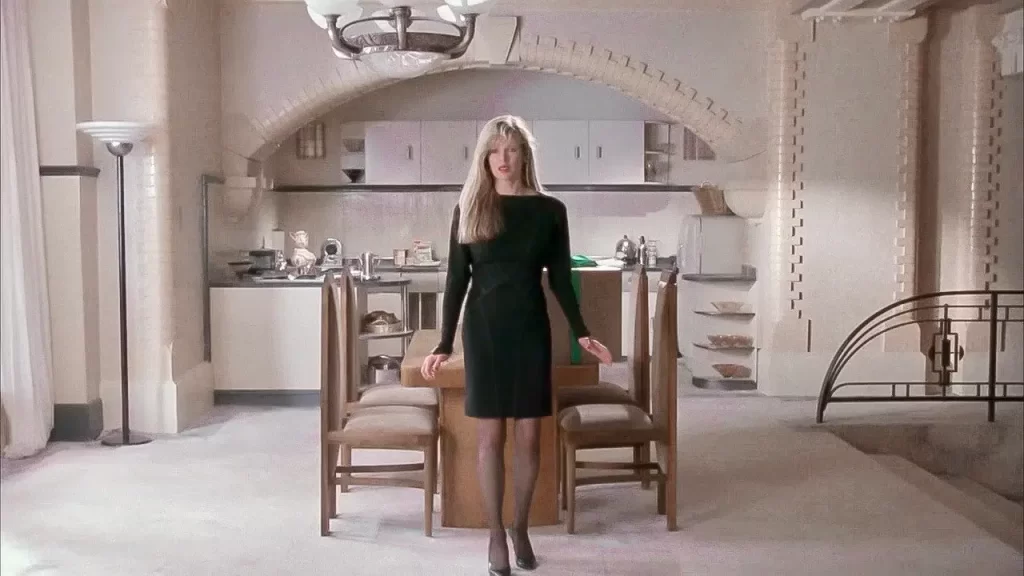
As with the other sets of the film, Vale’s apartment is the brainchild of set designer Anton Furst and set decorator Peter Young. Their work on the film would garner them the Oscar for Best Art Direction at the 62nd Academy Awards ceremony. Sadly, Furst would die by suicide in 1991, but his legacy survives on film. Thank goodness for that!
Deluxe Apartment in the Sky
To modern eyes, the design of the apartment can be easily placed in the 1980s. It exhibits many hallmarks from that decade like fitted carpeting, ample beige, and Post-Modern style. At the same time, it still looks exceedingly chic.
Riveted steel supports remind us we are in Gotham City while also providing architectural interest. Arches abound to indicate that this is a top-floor penthouse while also giving Romanesque and Gothic flair to the space. We see tile or brick quoins on the corners and edges of walls. Plush wall-to-wall carpeting is very 80s, but to my eyes in 2024 looks very fresh and novel.
Fine Furnishings
The furnishings appear to be either Art Deco or a mixture of Art Deco Revival and Post-Modern styles popular in the 1980s. The Art Deco style fits in naturally with the soaring aesthetic of Gotham. The large size of the apartment allows the furnishings to be amply spaced, giving a very minimal appearance.
The furniture features shades of cream or cognac with wood in blond or medium tones. The foyer features an arched, recessed bookshelf full of green encyclopedias (?). A fabulous lounge chair sits adjacently creating a sort of reading nook. I can’t quite place the chair, but the sleek design is typical of many of the higher-style Art Deco armchairs.
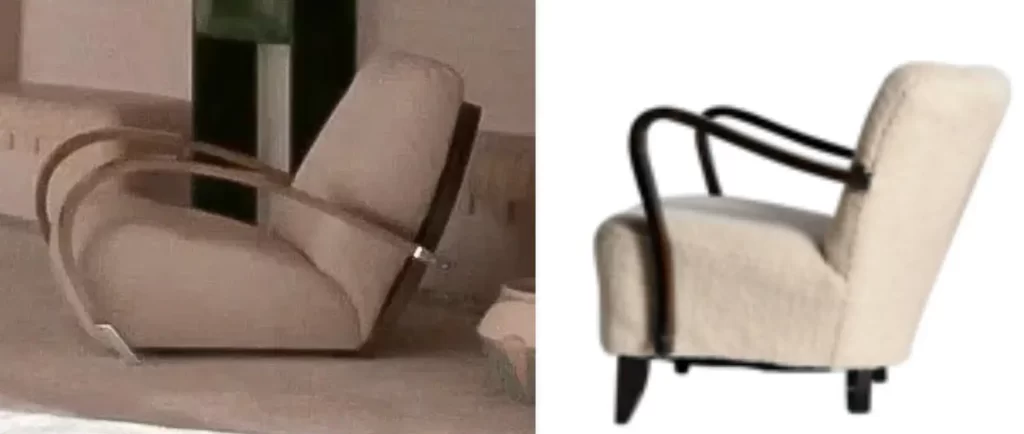
The apartment is a penthouse loft with an open floor plan. While the bedroom is partitioned by screens of wood and glass, its the furniture that mostly delineates space.
For example, an Art Deco Revival cabinet in blond burl and ebonized wood separates the foyer from the dining area.

High-quality Art Deco Revival pieces are actually quite hard to come by these days.
Only the Strong Survive
Vicki was one tenacious bird who tended to a fabulous nest in Gotham City. Maybe all of that time working for Vogue gave her a good sense for decorating. She certainly knew how to pick the best elements of the styles popular in the late 1980s.
That all of these elements could still look so appealing 35 years later is a testament to the endurance of good taste. Art Deco was already tried and true by the 1980s, and Post-Modernism was just a novel play on classical styles. The lesson from Vicki Vale’s 1980s apartment is that incorporating and mixing decor elements that have survived the critical assault of time will always lead to a stylish and timeless space.

